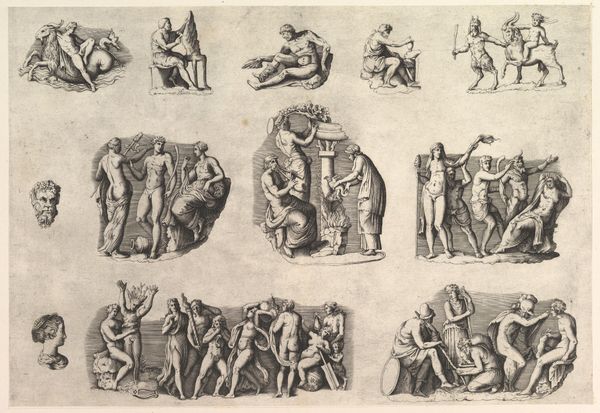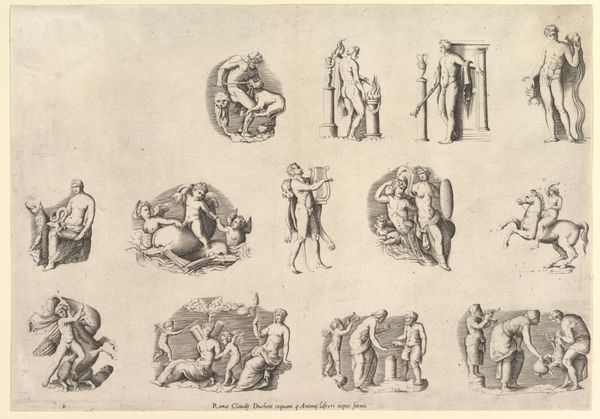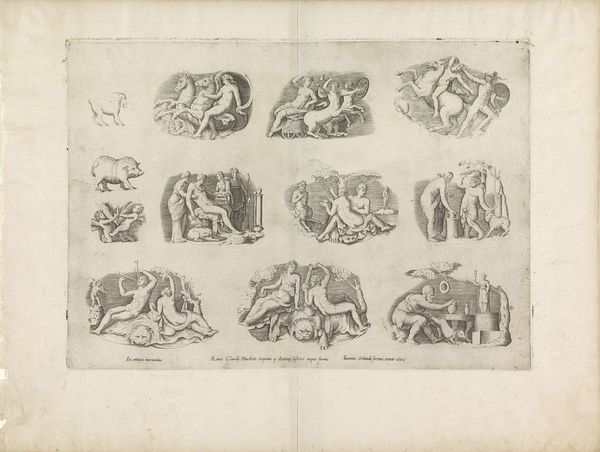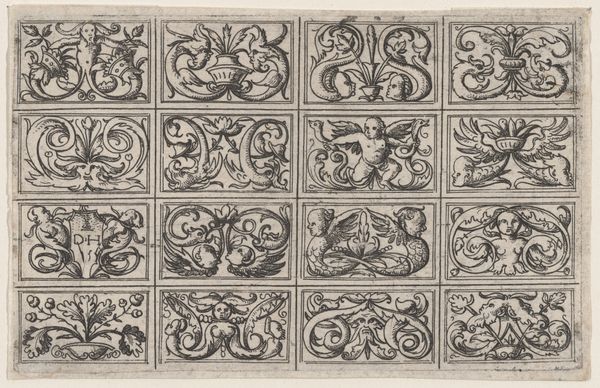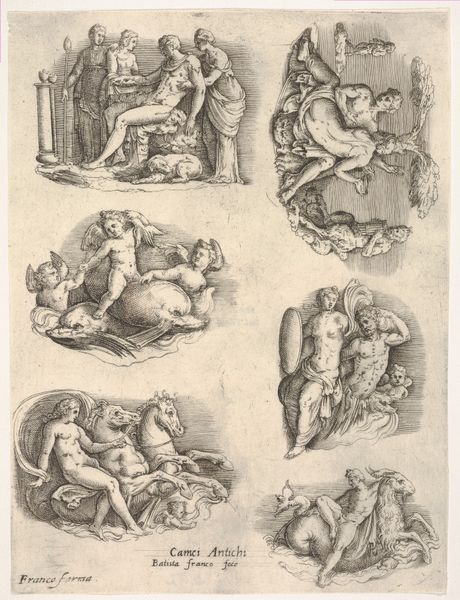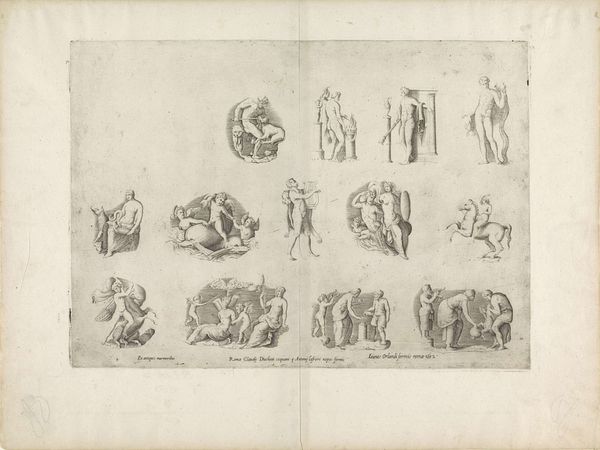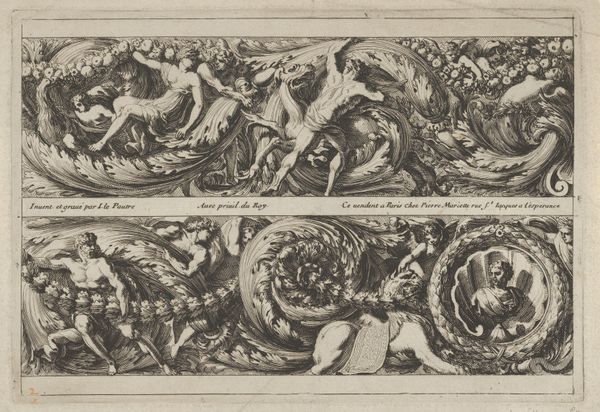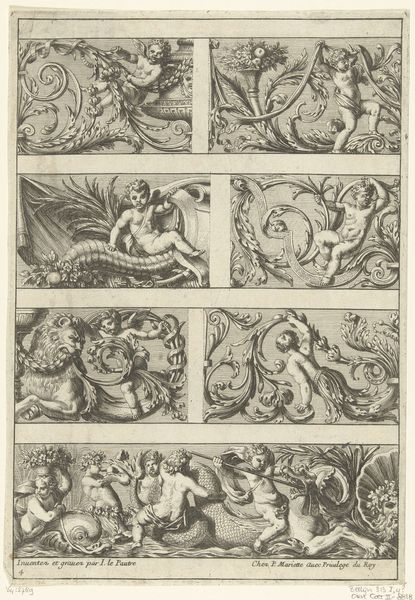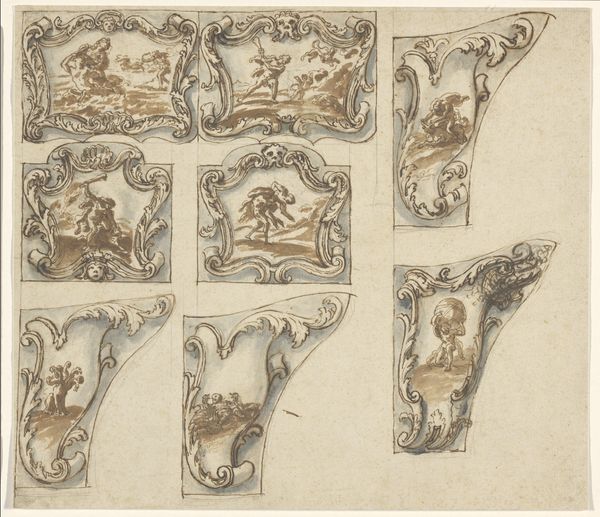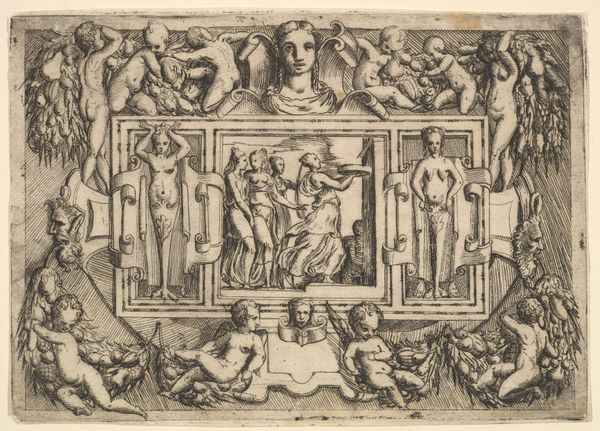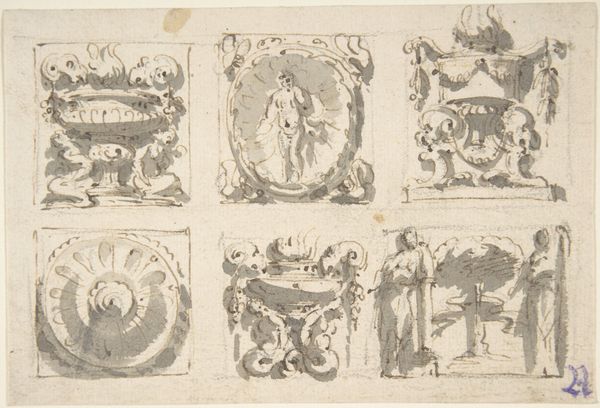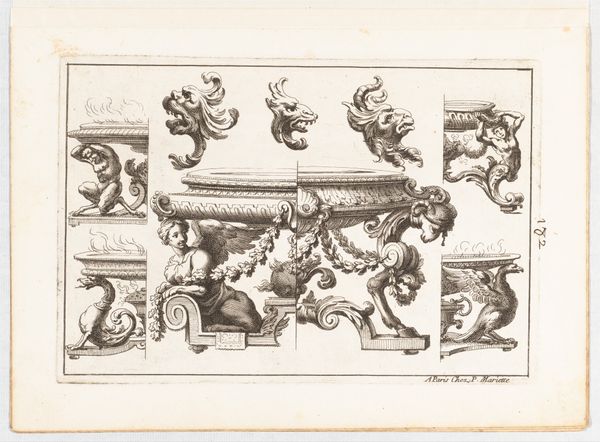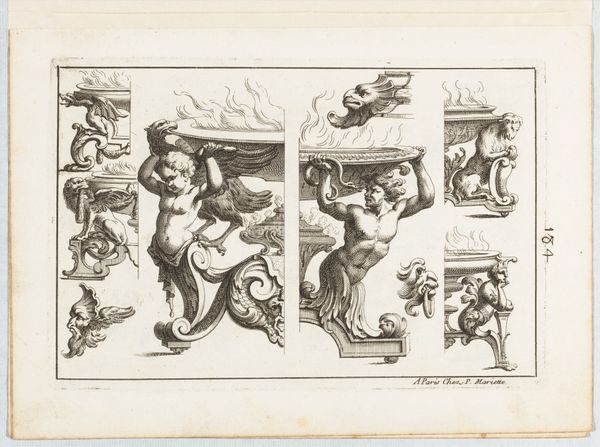
Speculum Romanae Magnificentiae: Subjects after Antique Cameos and Gems 1545 - 1582
0:00
0:00
drawing, print, engraving
#
drawing
#
allegory
# print
#
figuration
#
11_renaissance
#
history-painting
#
academic-art
#
italian-renaissance
#
engraving
Copyright: Public Domain
Editor: This is a print titled *Speculum Romanae Magnificentiae: Subjects after Antique Cameos and Gems*, made between 1545 and 1582. It's a fascinating collection of engravings, all these little scenes crammed onto one sheet. They feel like fragments of a lost world. How do you interpret the use of classical imagery during the Renaissance? Curator: I see this as a deliberate act of cultural reclamation. The Renaissance wasn't just about pretty pictures; it was a period of intense debate about identity, power, and the legacy of antiquity. The choice to reproduce cameos and gems—historically objects of elite status and symbolic authority—becomes a statement. Editor: A statement of what, exactly? Curator: I would suggest the artist is pointing to a desire to reconnect with and redefine Roman power. Consider how the male nudes and female allegories are presented. Do you see any recontextualization or even subversion of traditional gender roles or political narratives within these borrowed forms? Is there a deliberate break with what these figures originally meant? Editor: I guess, now that you point it out, there is something unsettling about seeing these depictions divorced from their original context, almost like trophies. And you're right, they're mostly nude. How does this relate to power structures in that period? Curator: The emphasis on classical forms during this era highlights the revival of not only artistic techniques, but also philosophies and values associated with pre-Christian civilizations. However, what often goes unsaid is how the same aesthetic ideals were utilized to promote ideologies, including oppressive ones. Editor: So, by displaying these scenes, the artist isn't necessarily endorsing them, but presenting them for re-evaluation. I see, it’s all about recontextualizing for a Renaissance audience. Thanks, I will need some time to digest all of that. Curator: Precisely. This work isn't just a record of classical forms; it's an active engagement with their legacy, forcing us to question what we inherit from the past and how we choose to reshape it.
Comments
No comments
Be the first to comment and join the conversation on the ultimate creative platform.
